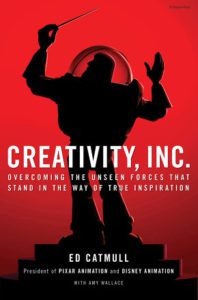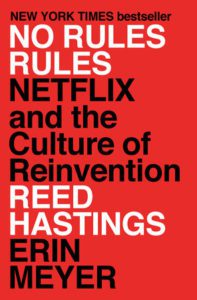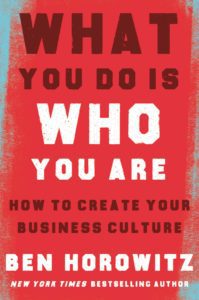The 7 Best Books on Building a Positive Work Culture
"Culture" is tough to define and even tougher to build. It's the elusive secret sauce that keeps employees engaged, effective, and enthusiastic.
But what is culture really?
Here are the three best definitions I've found:
- Culture is the spoken and unspoken norms of how we do things here.
- "Culture is simply a shared way of doing something with passion."
- "Culture is a thousand things, a thousand times. It’s living the core values when you hire; when you write an email; when you are working on a project; when you are walking in the hall."
The first definition is one I've cobbled together from various quotes I've heard through the years, and the latter two definitions come from Brian Chesky, Airbnb co-founder and CEO. (If you haven't yet, check out his article about company culture.)
If you're a leader and you've been trying to improve your team's culture, here are seven books that offer practical tips, examples, and ideas. You can't go wrong with any of these.
Book Summary
All In is a great primer for how to create an amazing work culture. It's full of reminders about how to keep your team engaged and aligned. Gostick and Elton advocate choosing a small number of core values, facing difficult truths head-on, involving your employees in decisions that affect them, and connecting your company mission back to what's most important to employees. As I read All In, I evaluated my company against the leadership traits and practices described in the book, and I'm convinced every company would be better if we could practice what's preached in this book.
“In customer-focused firms, leadership puts more responsibility in the hands of key employees who are asked to push the entire organization forward. They are given permission to disrupt and innovate with the customer in mind.” -Adrian Gostick and Chester Elton
Key Insights
- “You as the manager are the core influencer of the kind of culture at play in your team, division, or whole company.”
- “Good companies will tell you what they do and how they do it; great companies focus on why they do what they do for their customers.”
- “A culture of customer focus provides channels for employees to report upward issues they see on the front lines, rewards them when they spot something important, encourages them to find challenges invigorating, and empowers people at all levels to respond to those challenges with alacrity and creativity.”
- “Allowing employees to insert their style and creativity into an assignment without unnecessary censorship demonstrates trust in employees’ abilities. And the experience of taking the lead builds competency, a sense of ownership, and trust in you as a leader. Look, we know it’s hard to hold back criticism, and a manager wants to always be right, but a good rule of thumb is, ‘If it’s 70 percent as good as you would have done it, then leave it alone.’”
Book Summary
Achor explains that our society has a flawed way of thinking about competition, stress, praise, and leadership. All our lives, we're praised for individual achievements. From standing up on our own as babies to getting the highest score on the math test in high school, we're encouraged to think about success as an individual achievement. But individual ability will only take you so far, and if you want to unlock landmark success in any field, you'll need to get the most out of your team and find ways to uplift each other. Big Potential is one of the most inspiring books I've read in a while, and it's packed with advice you can build a career on.
"[O]ur greatest successes don't exist in isolation. As the research begins to emerge, we seem to be learning that almost every attribute of your potential—from intelligence to creativity to leadership to personality and engagement—is interconnected with others." -Shawn Achor
Key Insights
- "The height of your potential is predicted by the people who surround you."
- "We need to stop asking 'How many points did you score?' and start asking 'How did you help your team win?'"
- "No matter how brilliant your mind or strategy, if you're playing a solo game, you'll always lose out to a team." -Reid Hoffman
- "Celebration is the oxygen of Big Potential. And if we want to sustain the gains we have achieved, we need to keep breathing it in. We need to remember that whatever seat we sit in, we have the power to create change worth celebrating. The more we celebrate, the more we enrich our lives with meaning. And the more meaning we have in our lives, the more there is to celebrate."
Book Summary
Creativity, Inc. is packed with tips for how to breed innovation and employee autonomy in any company. Ed Catmull, President of Pixar Animation and Disney Animation, pulls back the covers to reveal how Disney and Pixar foster a healthy culture of creativity by trusting their people to solve problems. This book is required reading for any leader looking to empower his or her people to act autonomously, innovate, and learn from mistakes.
“We start from the presumption that our people are talented and want to contribute. We accept that, without meaning to, our company is stifling that talent in myriad unseen ways. Finally, we try to identify those impediments and fix them.” -Ed Catmull and Amy Wallace
Key Insights
- “Trust doesn’t mean that you trust that someone won’t screw up—it means you trust them even when they do screw up.”
- “To be a truly creative company, you must start things that might fail.”
- “It is not the manager’s job to prevent risks. It is the manager’s job to make it safe to take them.”
- “Don’t wait for things to be perfect before you share them with others. Show early and show often. It’ll be pretty when we get there, but it won’t be pretty along the way. And that’s as it should be.”
- “We realized that our purpose was not merely to build a studio that made hit films but to foster a creative culture that would continually ask questions.”
- “I look for ways to institutionalize (candor) by putting mechanisms in place that explicitly say it is valuable…Put smart, passionate people in a room together, charge them with identifying and solving problems, and encourage them to be candid with one another.”
Book Summary
Harvard Business School professor Amy Edmondson stumbled upon the concept of "psychological safety" while she was researching teamwork. She eventually realized that psychological safety is one of the biggest drivers of team success, and her research is now cited in hundreds of business books and articles. Edmondson includes enough stories and case studies to appease business readers and executives while including enough research and data to appease academics—a tough line to walk.
"Psychological safety is broadly defined as a climate in which people are comfortable expressing and being themselves. More specifically, when people have psychological safety at work, they feel comfortable sharing concerns and mistakes without fear of embarrassment or retribution. They are confident that they can speak up and won't be humiliated, ignored, or blamed." -Amy Edmondson
Key Insights
- "If leaders want to unleash individual and collective talent, they must foster a psychologically safe climate where employees feel free to contribute ideas, share information, and report mistakes."
- "Working in a psychologically safe environment does not mean that people always agree with one another for the sake of being nice. It also does not mean that people offer unequivocal praise or unconditional support for everything you have to say. In fact, you could say it's the opposite. Psychological safety is about candor, about making it possible for productive disagreement and free exchange of ideas."
- "Cheating and covering up are natural by-products of a top-down culture that does not accept 'no' or 'it can't be done' for an answer."
- "In sum, leaders who are approachable and accessible, acknowledge their fallibility, and proactively invite input from others can do much to establish and enhance psychological safety in their organizations."
Book Summary
Coyle spent four years researching what causes teams to be successful. Along the way, he studied groups as diverse as the Navy SEALs, the San Antonio Spurs, and a gang of jewel thieves. I loved this book because it provides dozens of examples of what types of cultural norms keep teams together. It's loaded with fascinating anecdotes and team values from dozens of organizations. Some of my favorites were "Be aware of your emotional wake," "Put us out of business with your generosity," and "B-level work is bad for your soul." This book is especially useful for culture builders looking to further crystallize your company's unique values.
“Group culture is one of the most powerful forces on the planet. We sense its presence inside successful businesses, championship teams, and thriving families, and we sense when it’s absent or toxic. We can measure its impact on the bottom line. (A strong culture increases net income 765 percent over ten years, according to a Harvard study of more than two hundred companies.) Yet the inner workings of culture remain mysterious.” -Daniel Coyle
Key Insights
- Coyle found that strong organizational culture is driven by three specific things:
- Strong teams find ways to build safety.
- Strong teams share vulnerability with each other.
- Strong teams establish purpose and every member commits to that purpose.
- “One misconception about highly successful cultures is that they are happy, lighthearted places. This is mostly not the case. They are energized and engaged, but at their core their members are oriented less around achieving happiness than around solving hard problems together.”
- “Vulnerability doesn’t come after trust—it precedes it. Leaping into the unknown, when done alongside others, causes the solid ground of trust to materialize beneath our feet.”
- “Walking around these [high-performing organizations], you tend to hear the same catchphrases and mottos delivered in the same rhythms...These groups, who by all rights should know what they stand for, devote a surprising amount of time telling their own story, reminding each other precisely what they stand for—then repeating it ad infinitum.”
Book Summary
Netflix co-founder and CEO Reed Hastings teamed up with author Erin Meyer to explain the magic behind Netflix's unique culture. Hastings shares how he and the executive team learned how to put more trust in their people, which led them to remove rules and policies, resulting in their "unlimited PTO" policy and their one-sentence expense policy. Hastings explains that if you hire, develop, and retain world-class people, you can empower your team to make their own decisions, candidly share feedback with each other, and co-create the culture with you.
"At Netflix, it is tantamount to being disloyal to the company if you fail to speak up when you disagree with a colleague or have feedback that could be helpful. After all, you could help the business—but you are choosing not to." -Reed Hastings and Erin Meyer
Key Insights
- "Your number one goal as a leader is to develop a work environment consisting exclusively of stunning colleagues."
- "In all creative roles, the best is easily ten times better than average."
- "Frequent candid feedback exponentially magnifies the speed and effectiveness of your team or workforce."
- "Today, in the information age, what matters is what you achieve, not how many hours you clock, especially for the employees of creative companies like Netflix. I have never paid attention to how many hours people are working."
- "Lead with context, not control."
- "When one of your people does something dumb don't blame them. Instead ask yourself what context you failed to set. Are you articulate and inspiring enough in expressing your goals and strategy? Have you clearly explained all the assumptions and risks that will help your team to make good decisions? Are you and your employees highly aligned on vision and objectives?"
Book Summary
What You Do Is Who You Are is arguably the most unique business book I've ever read. I guess I shouldn't be surprised. Horowitz has never been your typical suit-and-tie businessman. His first book (The Hard Thing About Hard Things) revealed Horowitz's brash, crass, hip-hop-driven business advice. He carries that same persona into this book about business culture. Rather than approaching culture with overworn case studies, he supplies fresh stories from slave revolts, prison gangs, and historic battles that emphasize how to create and breed culture within a group.
"If you don't methodically set your culture, then two-thirds of it will end up being accidental, and the rest will be a mistake." -Ben Horowitz
Key Insights
- "Companies—just like gangs, armies, and nations—are large organizations that rise or fall because of the daily microbehaviors of the human beings that compose them."
- "If somebody behaves in a way you can't believe, remember that your culture somehow made that acceptable."
- "Think carefully about what your flaws are, because you don't want to program them into your culture—or else leading by example will bite you in the ass."
- "So I asked myself, How many of the following questions can be resolved by turning to your corporate goals or mission statement?"
- Is the quality of this document good enough or should I keep working on it?
- Should I stay at the Four Seasons or the Red Roof Inn?
- Should I point out what my peers do wrong, or what they do right?
- Should I go home at 5 p.m. or 8 p.m.?
- Should we discuss the color of this new product for five minutes or thirty hours?
- "There aren't any 'right answers' to those questions. The right answers for your company depend on what your company is, what it does, and what it wants to be. In fact, how your employees answer these kinds of questions is your culture. Because your culture is how your company makes decisions when you're not there. It's the set of assumptions your employees use to resolve the problems they face every day. It's how they behave when no one is looking."
If you're looking for more book recommendations and quick takeaways, check out my full list of Book Reviews.












greatt love it